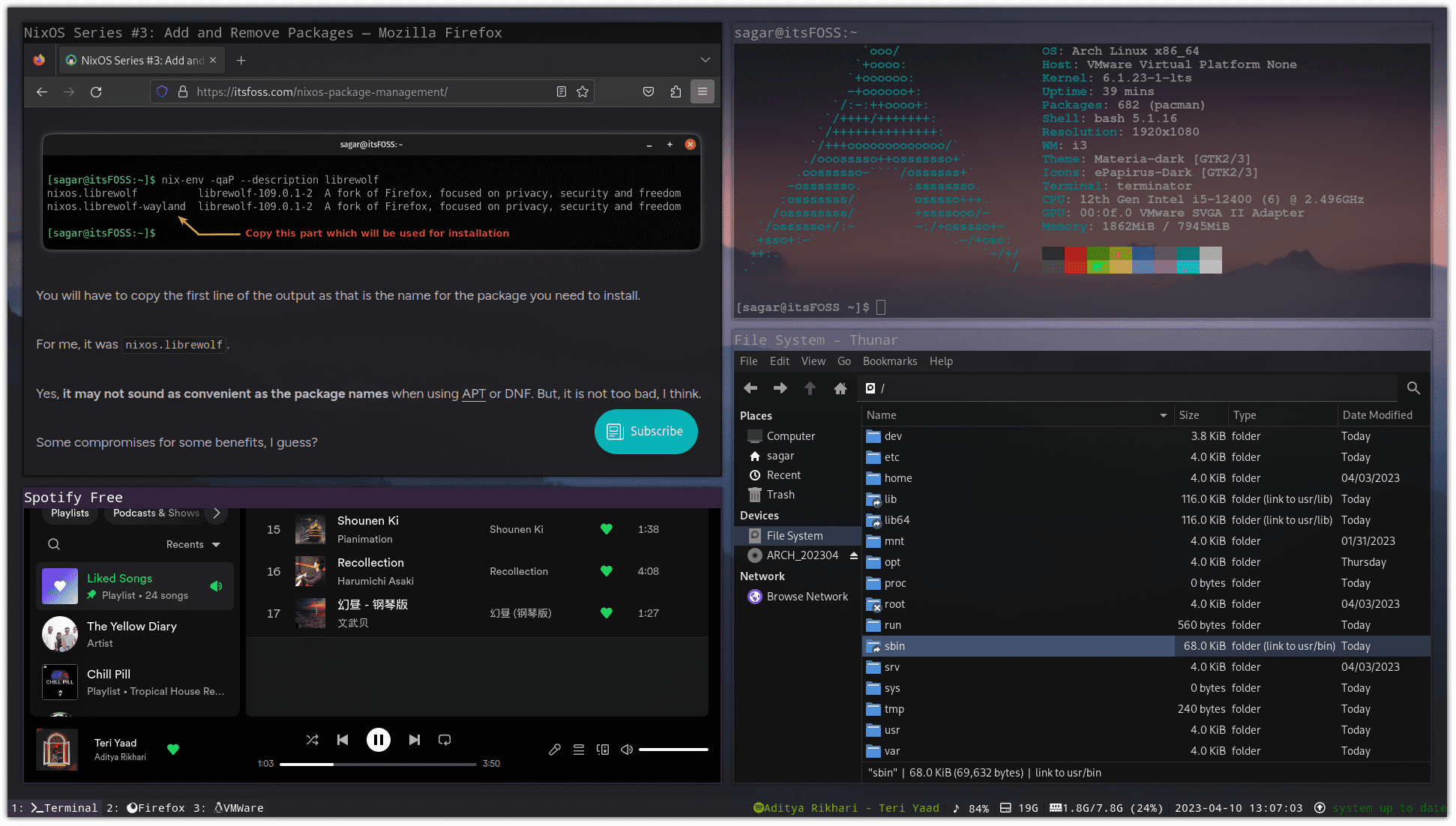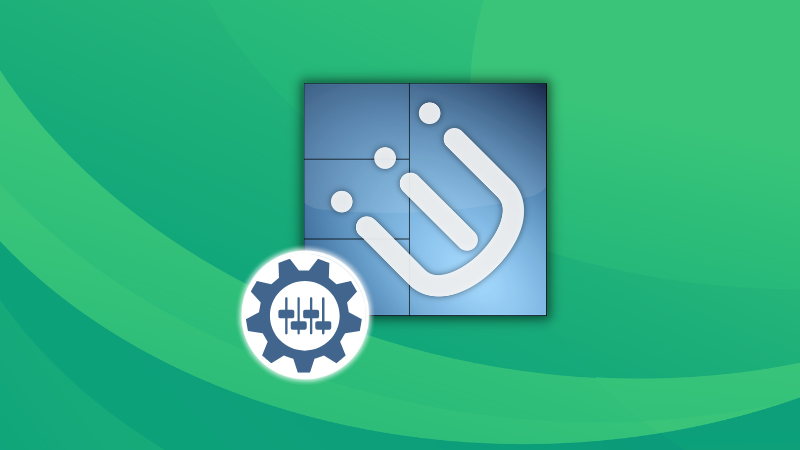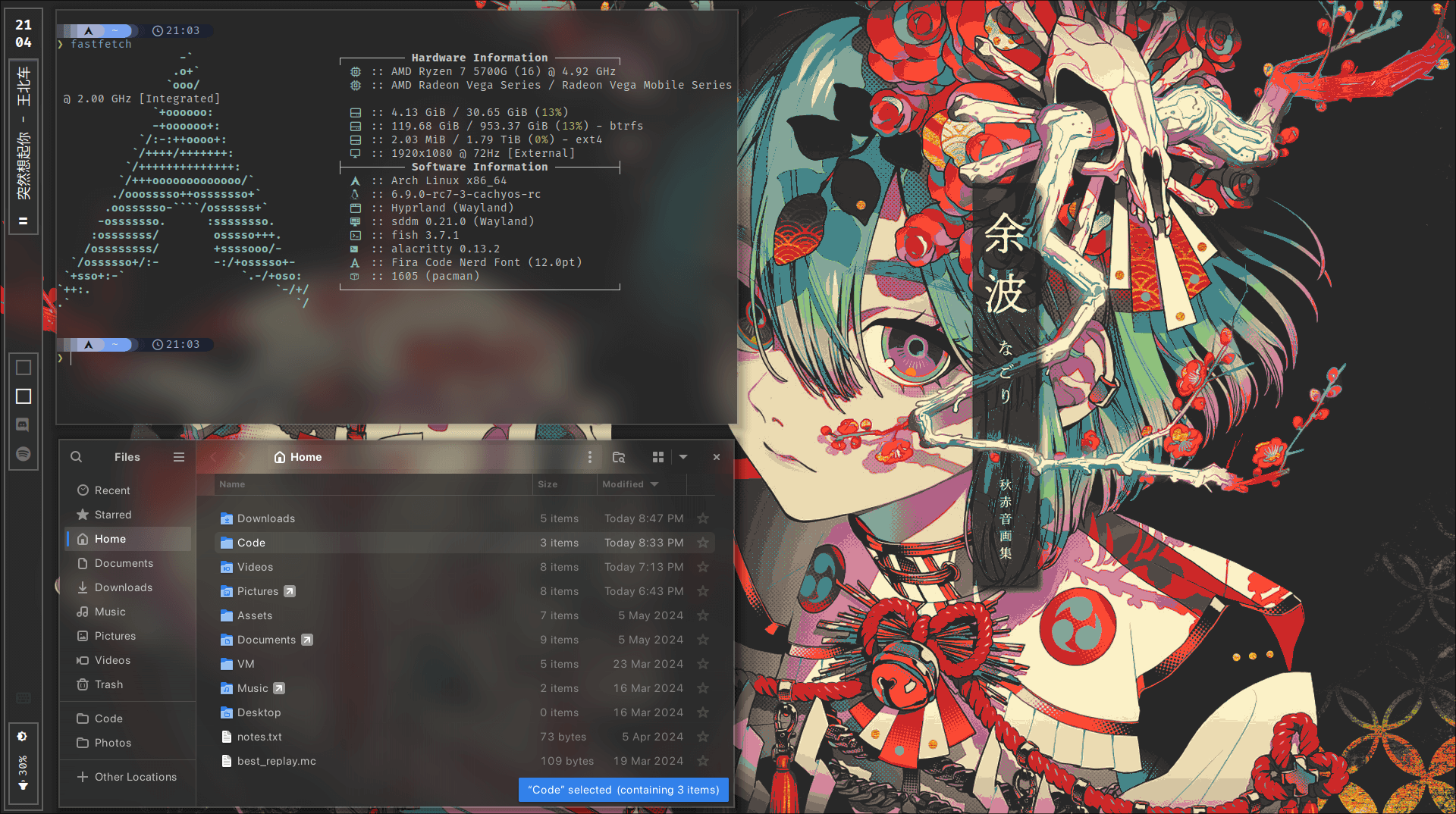
One of the biggest reasons to use Linux over Windows/macOS is the existence of tiling window managers.
There is nothing better than that. Period. The superpowers a user gets with a tiling window manager multiplies the efficiency, and productivity in using a desktop.
But, what is a tiling window manager? How big of an advantage does it give you? Should you try it? In this article, I tell you all about it.
Here's What A Tiling Window Manager Is

A tiling window manager is a software that organizes your windows side-by-side in a tiling layout. It ensures that no windows overlap, and the screen real estate is fully utilized.
With it, you do not have to worry about organizing the windows on your desktop to fill up all the space. The tiling window manager will automatically do that for you. Sure, you can take manual control and organize the space as well, using keyboard shortcuts for speed or your mouse.
A tiling window manager can entirely replace your desktop environment (if you want to) or work on top of it, depending on how you choose to use it.
If you pick a distribution that supports tiling windows by default, like Pop!_OS, you do not have to worry about a learning curve. All you need to do is enable the auto-tiling functionality. You can use various keyboard shortcuts to manage them/re-organize the windows.
You can also decide to add tiling window functionality to your existing desktop, by adding a plugin like Tiling Assistant to your GNOME desktop or Bismuth to KDE Plasma.

Interestingly, you can install Pop Shell on GNOME as well:

And, if you do not opt for any of the above methods, and want a dedicated window manager, you can try i3, sway, or explore other options mentioned below:

Fret not, you do not have to figure it out alone. We have a detailed guide on how to use and customize i3 window manager to get a head start:

Simply follow through the guide, and you will learn the essentials of using a window manager. And, with the same knowledge, you can try other tiling window managers as well.
Of course, if you check out the tutorial above, you will also realize that a window manager not just makes things efficient, you can make your desktop look the prettiest (and no other OS can beat it) 😉
Advantages of a Tiling Window Manager

Now that you know what it does, and the best tiling window managers available, what are the advantages that you get with it?
Here are the benefits of using a tiling window manager:
- Filling up the entire screen space and utilizing the available screen real estate.
- Accessing and navigating through active windows faster, without confusion.
- Increasing the efficiency by letting you take a look at all the windows at a glance, and saving your time by organizing them automatically.
- Tiling window managers like i3 and sway can reduce resource consumption, and promote better system performance.
- Making a keyboard-driven desktop experience possible.
- Ability to give your desktop the most gorgeous makeover.
Should You Use a Tiling Window Manager?
It depends on your style of interaction with the desktop. If you do not have many active windows, and you work with a limited set of windows, a tiling window manager may not be necessary.
You can still use it to organize windows when needed, by using a distro like Pop!_OS or through extensions. I would not recommend you to set up a full-fledged window manager experience if you do not have the requirements.
So, then, who is it for?
If you dabble with multiple windows at the same time, and feel, organizing them can help increase your efficiency. You need it.
Whether you have a big screen or a small one, a window manager is helpful for every user.
And, for folks with multi-monitor (and gigantic displays), you definitely need to give it a try! You are missing out on a powerful multitasking experience. I suggest you to try it before you decide it is not for you.
💬 How do you prefer to use a tiling window manager? Is it through an extension or a separate window manager with full blown customization? Let me know your thoughts!


